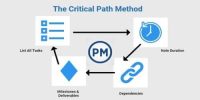Strategic evaluation and control can be defined as the process of determining the effectiveness of a given strategy in achieving the organizational objectives and taking corrective action wherever required. Actually, it is a system of monitoring, supervision, and follow-up. The fundamental strategy evaluation and control activities are: reviewing internal and external factors that are the bases for current strategies, measuring performance, and taking corrective actions.
There are some reasons or barriers for which strategic evaluation and control (SEC) system fails. These are as follows:
Limits of control: It is never an easy task for ‘strategists to decide the limits of control. Too much control may damage the ability of managers; on the other hand, too less control may make the strategic evaluation process ineffective.
Difficulties in measurement: The process of strategic evaluation is fraught with the danger of difficulties in measurement. The control system may measure element which is not intended to be evaluated.
Resistance: The evaluation process involves controlling the behavior of individuals. It is likely to be resisted by managers.
Short-termism: Managers often tend to measure the immediate results. As a result, the extended effect of strategy on performance is ignored.
Relying on efficiency Vs effectiveness: Efficiency is “doing things right” and effectiveness is “doing the right thing”. There is often a genuine confusion among managers as to what constitutes effective performance.
So, these are the various reasons or barriers for which strategic evaluation and control (SEC) system fails.














